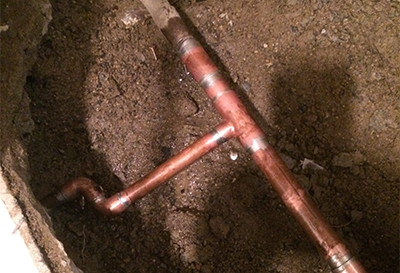Here below you might get a lot of brilliant information and facts when it comes to Hacks to detect leaks.

Early detection of leaking water lines can reduce a potential calamity. Aside from conserving you money, it will decrease the stress as well as stress. The moment you discover a leak, calling your plumber for fixings is the most effective option. Some small water leakages may not be noticeable. If you can not detect it with your naked eyes, here are some hacks that assist.
1. Analyze the Water Meter
Checking it is a proven way that aids you discover leakages. If it relocates, that suggests a fast-moving leakage. This indicates you may have a sluggish leakage that could also be underground.
2. Inspect Water Intake
Assess your water expenses and also track your water intake. As the one paying it, you ought to observe if there are any kind of disparities. If you spot sudden changes, despite your usage being the same, it implies that you have leaks in your plumbing system. Bear in mind, your water expense ought to drop under the same range monthly. An unexpected spike in your expense suggests a fast-moving leakage.
A steady rise every month, also with the exact same practices, reveals you have a slow-moving leak that's likewise slowly intensifying. Call a plumber to completely examine your building, specifically if you feel a warm location on your flooring with piping underneath.
3. Do a Food Coloring Test
When it comes to water intake, 30% comes from bathrooms. If the color in some way infiltrates your dish during that time without flushing, there's a leakage between the storage tank and dish.
4. Asses Exterior Lines
Do not fail to remember to examine your outside water lines too. Examination spigots by affixing a garden tube. Ought to water permeate out of the connection, you have a loose rubber gasket. Change this as well as make certain all links are tight. It will certainly help get it skillfully checked out as well as kept each year if you've got a sprinkler system. One tiny leak can squander tons of water and spike your water bill.
5. Assess the circumstance as well as check
Property owners must make it a behavior to examine under the sink counters and also inside cupboards for any bad odor or mold development. These 2 red flags show a leak so punctual interest is called for. Doing regular examinations, also bi-annually, can save you from a significant problem.
A lot more importantly, if you understand your house is currently old, keep a watchful eye on your heating systems, hose pipes, pipes and so on. Check for discolorations and deteriorating as the majority of devices and also pipelines have a life span. They will certainly additionally normally weaken due to wear and tear. If you believe dripping water lines in your plumbing system, don't wait for it to rise. Call a professional plumber today so you don't end up with a dreadful mess in your home.
Early discovery of dripping water lines can mitigate a prospective calamity. Some little water leaks may not be noticeable. Examining it is a surefire way that assists you find leakages. One small leakage can throw away loads of water as well as surge your water expense.
If you presume leaking water lines in your plumbing system, don't wait for it to intensify.
WARNING SIGNS OF WATER LEAKAGE BEHIND THE WALL
PERSISTENT MUSTY ODORS
As water slowly drips from a leaky pipe inside the wall, flooring and sheetrock stay damp and develop an odor similar to wet cardboard. It generates a musty smell that can help you find hidden leaks.
MOLD IN UNUSUAL AREAS
Mold usually grows in wet areas like kitchens, baths and laundry rooms. If you spot the stuff on walls or baseboards in other rooms of the house, it’s a good indicator of undetected water leaks.
STAINS THAT GROW
When mold thrives around a leaky pipe, it sometimes takes hold on the inside surface of the affected wall. A growing stain on otherwise clean sheetrock is often your sign of a hidden plumbing problem.
PEELING OR BUBBLING WALLPAPER / PAINT
This clue is easy to miss in rooms that don’t get much use. When you see wallpaper separating along seams or paint bubbling or flaking off the wall, blame sheetrock that stays wet because of an undetected leak.
BUCKLED CEILINGS AND STAINED FLOORS
If ceilings or floors in bathrooms, kitchens or laundry areas develop structural problems, don’t rule out constant damp inside the walls. Wet sheetrock can affect adjacent framing, flooring and ceilings.
https://www.servicemasterbyzaba.com/blog/how-to-detect-water-leakage-in-walls/

I found that blog post about Top leak detection hacks while exploring the search engines. Are you aware of somebody else who is truly interested in the subject? Take a moment to share it. Kudos for your time. Come back soon.